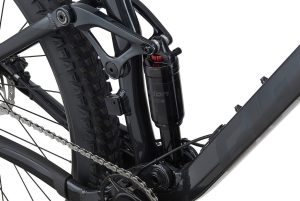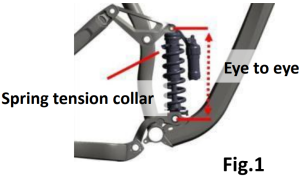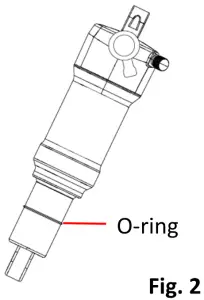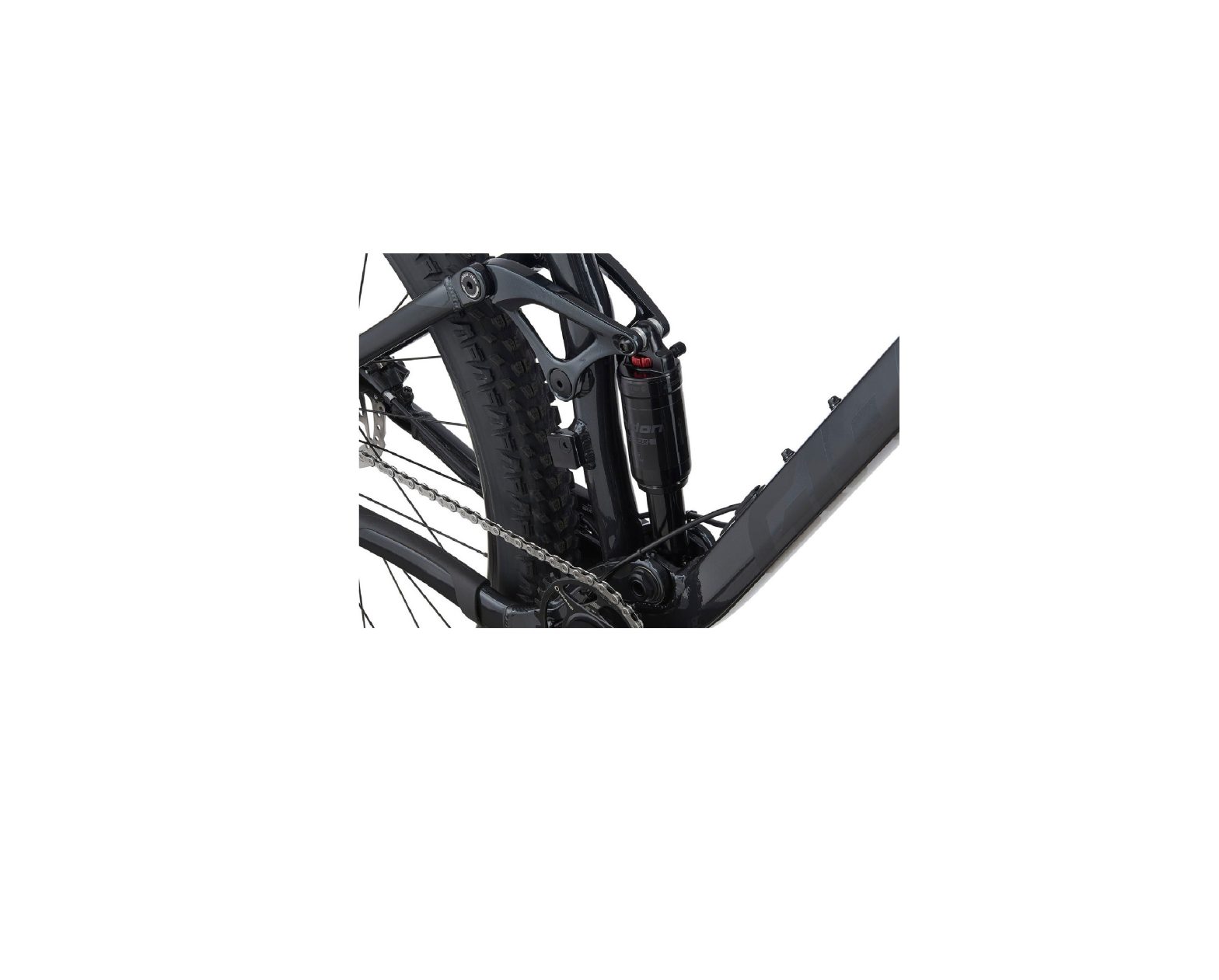GIANT MY20 Dual Suspension User Manual

INTRODUCTION
This booklet is intended as a quick-start reference guide to help familiarize you with your new GIANT full-suspension mountain bike. It is not meant to replace the general bicycle owner’s manual or the shock and suspension fork manufacturer’s technical manuals that also came with your bicycle. If you did not receive these manuals, please contact your Authorized GIANT dealer. We encourage you to read all manuals relating to your bicycle and its suspension components before your first ride. All manuals contain important information regarding the safety and operation of your bicycle.
 Please refer to the manufacturer’s technical information that came with your bicycle for specific details regarding shock function and setup prior to riding your GIANT bicycle. If you did not receive these technical booklets, contact your Authorized GIANT dealer. If you do not understand the quick-start instructions or have difficulty with setup, please see your Authorized GIANT dealer before riding your GIANT bicycle.
Please refer to the manufacturer’s technical information that came with your bicycle for specific details regarding shock function and setup prior to riding your GIANT bicycle. If you did not receive these technical booklets, contact your Authorized GIANT dealer. If you do not understand the quick-start instructions or have difficulty with setup, please see your Authorized GIANT dealer before riding your GIANT bicycle.
![]()
![]()
![]()
BASIC TERMS & SHOCK SETUP OVERVIEW
TERMS
- Bottomed Out: When a rear shock or suspension fork (herein after referred to as “shock”) is compressed completely and all the suspension travel has been used Compression Stroke: The motion of the shock in response to an impact.
- Damping: Internal mechanism to control the speed of compression or rebound.
- PSI: Pounds per square inch.
- Rebound: The extension or return stroke of the shock.
- Sag: Compression of the shock caused by the rider’s static weight.
- Spring Rate: The amount of force required to compress the spring.
- Topped Out: When the shock or fork rebounds quickly enough to cause a “clunk” at the very top of its upstroke.
SETUPPlease refer to the individual shock manufacturer’s technical manuals for specific information on how to adjust the shock on your GIANT dual suspension bicycle. The shock on your GIANT dual suspension bicycle can be adjusted to meet your riding style and weight. This booklet is intended as a quick-start guide to help you get started. It may take a few rides to find your preferred settings.
SAGAll GIANT dual suspension bikes rely on sag for its suspension to work efficiently. Please take a few moments to read through this guide to understand sag as it applies to your bicycle. Setting your bike’s sag will greatly enhance your riding experience and the performance of your bicycle.
REBOUND DAMPINGRebound damping controls the rate of speed at which the shock returns to its original position after responding to a bump force. Rebound damping prevents the shock from springing back too quickly. This is desirable because it improves the rear suspension’s sensitivity to small bumps and the tire’s ability to stay in contact with the ground. It also helps reduce the “pogo stick” motion from the rear suspension when the bike encounters a bump while the rider is seated. Typically, the heavier the rider (and higher the necessary spring rate), the more rebound damping is required. Please refer to this guide for details on how to set rebound damping rate. You should also refer to the individual shock manufacturer’s technical manual for specific information.
PEDAL PLATFORMA pedal platform system is part of the compression damping circuit in the rear shock on your Maestro bike. The system helps to control pedal induced “bob” on the suspension. Please refer to the shock manufacturer’s technical manual for specific adjustment information.
NOTEThe linkage design of the Maestro Suspension system is inherently efficient, therefore very little or no pedal platform is required to get the best from your bike.
GENERAL MAINTENANCE
- Inspect all suspension bolts and tighten if necessary to required torque settings. If unsure, take your bicycle to your Authorized GIANT dealer immediately for inspection.
- Do not use high-pressure water sources to wash or rinse your bicycle. Doing so can displace any lubricants that are present, as well as possibly forcing water and/or contaminants into the bearings that can harm the pivot and bearing, reduce performance, and cause premature wear. Use only low pressure water, or a bucket of water with a sponge and a soft nylon bristle brush and mild soap to clean the frame and components. We would recommend that you do not use dish washing liquid due to its high salt content that can cause corrosion. If using bicycle specific cleaners/degreasers please check the manufacturer’s recommended amount of time to leave the cleaner on your bike. Prolonged exposure to some such cleaners can damage the surface finish of your frame and or components.
FRONT SUSPENSION TRAVEL & SAG GUIDE
- To determine your bike’s specific front suspension travel adjustments and recommended settings, please refer to the fork manufacturer’s technical manual.
- A suspension fork is effective at both absorbing bump forces and helping the tire to track the ground for improved traction and braking control.
- When in active mode, a fork will rely on sag to keep the front tire in better contact with the ground during braking. The chart on page 7 should be used as a general guideline.
COIL SPRING FORKS
- Springs on these types of forks are set at the factory. Most have a simple preload adjuster that allows the rider to make the fork firmer or softer depending on rider’s weight. The heavier the rider, the firmer the spring setting should be.
- If with no preload you are not achieving the recommended sag then a softer spring is needed and if with maximum preload you are achieving too much sag then a harder spring is needed.
- To check rebound, turn the rebound damping knob (if applicable) counter-clockwise until it stops. With full body weight, push down on the fork forcefully with the front brake on and watch (and feel) how the fork rebounds. Turn the rebound damping knob clockwise until the fork rebounds slightly slower than with no damping (the heavier the rider, the more damping will be required).
AIR SPRING FORKS
- As a general guide, pump the main chamber (main spring) to a psi equal to 60% of your rider weight in pounds (2.2lb = 1kg).
- Adjust the fork’s sag by using the same procedure used for accurately adjusting, the sag on your rear shock as described on “SUGGESTED REAR SUSPENSION SAG GUIDE”.
SUSPENSION SAG RECOMMENDATION CHART
|
FORK TRAVEL (mm) |
SAG (mm) |
|
80 |
12-16 |
|
100 |
20-25 |
| 120 |
24-30 |
|
140 |
35-42 |
|
160 |
48-56 |
| 180 |
54-63 |
| 200 |
60-70 |
REAR SHOCK SETUP GUIDE
COIL SHOCK SETUP
GIANT’s Maestro rear suspension design precisely positions the pivots and linkages to give you efficient pedaling and small bump compliance. Maestro’s pivot placement allows the rear suspension to be completely active under pedaling and braking, allowing the rear wheel to react constantly to the terrain.
- All coil shock-equipped GIANT bicycles use the same formula to determine “sag” and “rebound damping” (see Basic Terms & Shock setup Overview for definition of sag and rebound damping).
![]()
![]()
![]()
- Maestro-equipped mountain bikes rely on rear suspension “sag.” Sag (see Basic Terms & Shock Setup Overview) is a critical performance component and is relative to the individual rider’s weight. See the following sag setting instructions for details.
- GIANT’s Glory DH and Glory frame designs and travel are intended for aggressive freeriding and recreational/competitive downhill riding. The sag range can accommodate a wide variety of riding styles and terrain.
- The GIANT Reign is an all-mountain bicycle designed to handle both aggressive trail riding and light freeriding duties. The multi-tunable shock can be almost infinitely adjusted for all types of terrain and riding styles.
COIL SHOCKS SETTING & ADJUSTING SAG
- Turn the spring tension collar counter clockwise until there is minimal tension on the spring (Fig.1).


- With a felt-tip marker, place a dot on the edge of the collar and the shock body so you can measure full rotations of the shock collar.
- Position your bicycle next to a wall so that you can sit on the bike with both feet on the pedals while steadying yourself with one arm. Gently sit on the saddle without bouncing. Have a partner measure the eye-to-eye distance while you are seated on the bike (Fig.1).
- Dismount and subtract the weighted eye-to-eye distance from the un-weighted eye-to-eye distance to determine sag. See Sag Recommendations charts for sag distances.
- For general purpose riding, the shock should compress approximately one quarter of its travel (please refer to the Sag Recommendations charts for specific recommendations for your frame). Turn the shock’s tension collar clockwise to increase spring tension/decrease shock sag.
- If you sit on the bike with minimal tension on the spring and there is less than one quarter of the shock travel, a lighter weight spring is needed. If you turn the shock tension collar three complete turns and the shock compresses more than a quarter of the shock’s travel, a heavier spring is needed. Consult your Authorized Giant Retailer for replacement springs.




AIR SHOCK SETUP
GIANT cross-country, trail and all mountain bikes feature an air shock equipped Maestro suspension design. Maestro-equipped mountain bikes rely on rear suspension “sag.” Sag (see Basic Terms & Shock Setup Overview) is a critical performance component and is relative to the individual rider’s weight.
USING A SHOCK PUMP
These simple steps will help you get the most accurate use of your shock pump and improve the life of your shock pump.
- When screwing the pump onto the shock do not screw it on all the way until it stops. This will damage the seal on the pump and also allow too much air to escape when you remove the pump.
- Watch the pressure gauge on the pump when you screw the pump onto the shock. Screw the pump on until the gauge registers a pressure and then another 1/4 – 1/2 turn. At this point you now have a strong air seal.
- When you remove the pump a small amount of air will always be lost. If you follow our recommendation above the pressure loss will only be approximately 5% rather than up to 50% if the pump is screwed all the way onto the valve. Because of this pressure loss when you have found a pressure that gives you the best performance from your frame you will need to add 5% extra pressure according to the gauge to leave the required pressure in the shock once the pump is removed.
E.g. Required pressure is 160psi, 5% = 8psi. Pump the shock until the gauge reads 168psi, remove the pump, 160psi will be left in the shock.
AIR SHOCKS SETTING AND ADJUSTING SAG
- Pump the main air chamber to a psi equal to 100% of rider weight in pounds (2.2lb = 1kg).
- Push the rubber O-ring that is around the shock shaft all the way against the base of shaft (closest to shock body).
- Position your bicycle next to a wall so that you can sit on the bike with both feet on the pedals while steadying yourself with one arm. Gently sit on the saddle without bouncing. Dismount gently without bouncing and take note of how far the O-ring has moved down the shaft. Measure distance O-ring has moved (Fig. 2).


- Add or remove air until desired shock movement is obtained. To achieve a high level of accuracy it’s best to carry out this procedure while wearing normal riding kit including shoes, hydration pack, any tools, etc. The shock pump must be removed every time you check the sag.




- Please refer to the shock manufacturer’s technical manual for minimum and maximum working pressures for your shock. Refer to the Sag Recommendation Guide on the next page for proper sag measurement.
- If there is no O-ring on the shock body or you cannot clearly see the shock shaft then please use the method for coil spring bikes using the eye to eye measurement as described on page 9.
COIL & AIR SHOCKS SETTING & ADJUSTING REBOUND DAMPING
(See Basic Terms and Shock Setup Overview for definition of rebound damping).
- 1. If you are unfamiliar with rebound damping, perform this procedure: With full body weight, push down on the saddle forcefully to compress the shock. Watch (and feel) how the shock rebounds from compression. Next, turn the rebound damping knob clockwise until it stops and compress the shock under full body weight. Note that the shock rebounds very slowly. Next, turn the damping knob counterclockwise a few complete turns and re-perform your compression testing until the shock rebounds more slowly than with no damping.
- To check the rebound damping rate while riding, ride off a curb while seated. The rear suspension should bounce only once upon rebound (the heavier the rider, the more damping will be required). Adjust accordingly to accomplish this motion. If the suspension bounces more than once, turn the damping knob clockwise until one bounce is achieved.
SUGGESTED REAR SUSPENSION SAG GUIDE
MY21 bike models
| Bicycle Model | Rear Wheel Travel | Eye To Eye Shock Length | Shock Travel | Shock Mounting Type | Hardware | Recommend Sag % |
Sag Measured By Travel |
| Anthem 29 Series | 90 mm | 165 mm | 42.5 mm | Trunnion /Metric | 54×10/No Bushing | 20-25% | 8.5-10.6 mm |
| Embolden Series | 120 mm | 184.15 mm | 44.45 mm | Standard/Inch | 22.2×6/No Bushing | 25% | 11 mm |
| Intrigue 29 Series | 125 mm | 185 mm | 50 mm | Trunnion /Metric | 54×10/No Bushing | 25% | 12.5 mm |
| Intrigue Series | 140 mm | 185 mm | 52.5mm | Trunnion /Metric | 54×10/No Bushing | 30% | 15.8 mm |
| Pique 29 series | 100 mm | 165 mm | 45 mm | Trunnion /Metric | 54×10/No Bushing | 20-25% | 9-11.2 mm |
| Reign 29 Series | 146 mm | 205 mm | 60 mm | Trunnion /Metric | 54×10/No Bushing | 30-35% | 18-21mm |
| Reign Series | 160 mm | 205 mm | 62.5 mm | Trunnion /Metric | 54×10/No Bushing | 30-35% | 18.8-21.9 mm |
| Stance 29 Series | 120 mm | 184.15 mm | 44.45 mm | Standard/Inch | 22.2×6/No Bushing | 25% | 11 mm |
| Stance Series | 120 mm | 184.15 mm | 44.45 mm | Standard/Inch | 22.2×6/No Bushing | 25% | 11 mm |
| Trance 29 Series | 115 mm | 165 mm | 42.5mm | Trunnion /Metric | 54×10/No Bushing | 25% | 10.6 mm |
| Trance Jr Series | 120 mm | 165 mm | 42.5mm | Trunnion /Metric | 54×10/No Bushing | 25% | 10.6-12.8 mm |
| Trance Series | 140 mm | 185 mm | 52.5mm | Trunnion /Metric | 54×10/No Bushing | 30% | 15.8 mm |
| Trance X 29 series | 135 mm | 185 mm | 55 mm | Trunnion /Metric | 54×10/No Bushing | 25% | 13.8 mm |
MY20 bike models
|
Bicycle Model |
Rear Wheel Travel | Eye To Eye Shock Length | Shock Travel | Shock Mounting Type | Hardware | Recommend Sag % |
Sag Measured By Travel |
| Anthem 29 Series | 90.mm | 165 mm | 42.5mm | Trunnion /Metric | 54×10/No Bushing | 20-25% | 8.5-10.6 mm |
| Pique 29series | 100.mm | 165 mm | 45.mm | Trunnion /Metric | 54×10/No Bushing | 20-25% | 9-11.2 mm |
| Stance Series | 120.mm | 184.15 mm | 44.45mm | Standard/Inch | 22.2×6/No Bushing | 25% | 11 mm |
| Embolden Series | 120.mm | 184.15 mm | 44.45mm | Standard/Inch | 22.2×6/No Bushing | 25% | 11 mm |
| Stance 29 Series | 120.mm | 184.15 mm | 44.45mm | Standard/Inch | 22.2×6/No Bushing | 25% | 11 mm |
| Trance 29 Series | 115.mm | 165 mm | 42.5mm | Trunnion /Metric | 54×10/No Bushing | 25% | 10.6 mm |
| Trance Jr Series | 120.mm | 165 mm | 42.5mm | Trunnion /Metric | 54×10/No Bushing | 25% | 10.6-12.8 mm |
| Trance Series | 140.mm | 185 mm | 52.5mm | Trunnion /Metric | 54×10/No Bushing | 30% | 15.8 mm |
| Intrigue Series | 140.mm | 185 mm | 52.5mm | Trunnion /Metric | 54×10/No Bushing | 30% | 15.8 mm |
| Reign Series | 160.mm | 205 mm | 62.5mm | Trunnion /Metric | 54×10/No Bushing | 30-35% | 18.8-21.9 mm |
| Hail Series | 160.mm | 205mm | 62.5mm | Trunnion /Metric | 54×10/No Bushing | 30-35% | 18.8-21.9 mm |
| Reign 29 Series | 146.mm | 205 mm | 60.mm | Trunnion /Metric | 54×10/No Bushing | 30-35% | 18-21mm |
| Glory Series | 200.mm | 240 mm | 76.mm | Standard/Inch | 40×8/No Bushing | 30-35% | 22.8-26.6 mm |
MY19 bike models
|
Bicycle Model |
Rear Wheel Travel | Eye To Eye Shock Length | Shock Travel | Shock Mounting Type | Hardware | Recommend Sag % |
Sag Measured By Travel |
| Anthem 29 Series | 90.mm | 165 mm | 42.5mm | Trunnion /Metric | 54×10/No Bushing | 20-25% | 8.5-10.6 mm |
| Anthem Series | 110.mm | 165 mm | 42.5mm | Trunnion /Metric | 54×10/No Bushing | 20-30 % | 8.5-12.8 mm |
| Stance Series | 120.mm | 184.15 mm | 44.5mm | Standard/Inch | 22.2×6/No Bushing | 25% | 11 mm |
| Embolden Series | 120.mm | 184.15 mm | 44.45mm | Standard/Inch | 22.2×6/No Bushing | 25% | 11 mm |
| Pique Series | 120.mm | 165 mm | 42.5mm | Trunnion /Metric | 54×10/No Bushing | 25-30 % | 10.6-12.8 mm |
| Trance 29 Series | 115.mm | 165 mm | 42.5mm | Trunnion /Metric | 54×10/No Bushing | 25% | 10.6 mm |
| Trance Jr Series | 120.mm | 165 mm | 42.5mm | Trunnion /Metric | 54×10/No Bushing | 25% | 10.6-12.8 mm |
| Trance Series | 140.mm | 185 mm | 52.5mm | Trunnion /Metric | 54×10/No Bushing | 30% | 15.8 mm |
| Intrigue Series | 140.mm | 185 mm | 52.5mm | Trunnion /Metric | 54×10/No Bushing | 30% | 15.8 mm |
| Reign Series | 160.mm | 205 mm | 62.5mm | Trunnion /Metric | 54×10/No Bushing | 30-35% | 18.8-21.9 mm |
| Hail Series | 160.mm | 205mm | 62.5mm | Trunnion /Metric | 54×10/No Bushing | 30-35% | 18.8-21.9 mm |
| Glory Series | 200.mm | 240 mm | 76.mm | Standard/Inch | 40×8/No Bushing | 30-35% | 22.8-26.6 mm |
MY18 bike models
|
Bicycle Model |
Rear Wheel Travel | Eye To Eye Shock Length | Shock Travel | Shock Mounting Type | Hardware | Recommend Sag % |
Sag Measured By Travel |
| Anthem 29 series | 90.mm | 165 mm | 42.5mm | Trunnion /Metric | 54×10/No Bushing | 20-25% | 8.5-10.6 mm |
| Anthem series | 110.mm | 165 mm | 42.5mm | Trunnion /Metric | 54×10/No Bushing | 20-30 % | 8.5-12.8 mm |
| Stance series | 120.mm | 184.15 mm | 44.5mm | Standard/Inch | 22.2×6/No Bushing | 25% | 11 mm |
| Embolden series | 120.mm | 184.15 mm | 44.45mm | Standard/Inch | 22.2×6/No Bushing | 25% | 11 mm |
| Pique series | 120.mm | 165 mm | 42.5mm | Trunnion /Metric | 54×10/No Bushing | 25-30 % | 10.6-12.8 mm |
| Trance Jr series | 120.mm | 165 mm | 42.5mm | Trunnion /Metric | 54×10/No Bushing | 25% | 10.6-12.8 mm |
| Trance series | 140.mm | 185 mm | 52.5mm | Trunnion /Metric | 54×10/No Bushing | 30% | 15.8 mm |
| Reign series | 160.mm | 205 mm | 62.5mm | Trunnion /Metric | 54×10/No Bushing | 30-35% | 18.8-21.9 mm |
| Hail series | 160.mm | 205mm | 62.5mm | Trunnion /Metric | 54×10/No Bushing | 30-35% | 18.8-21.9 mm |
| Glory series | 200.mm | 240 mm | 76.mm | Standard/Inch | 40×8/No Bushing | 30-35% | 22.8-26.6 mm |
MY17 bike models
|
Bicycle Model |
Rear Wheel Travel | Eye To Eye Shock Length | Shock Travel | Shock Mounting Type | Hardware | Recommend Sag % |
Sag Measured By Travel |
| Anthem 29 series | 100 mm | 165 mm | 38 mm | Standard | 22.2×6/No Bushing | 20-25% | 7.6-9.5 mm |
| Anthem series | 110 mm | 165 mm | 42.5 mm | Trunnion /Metric | 54×10/No Bushing | 20-30% | 8.5-12.8 mm |
| Stance series | 120 mm | 184.15 mm | 44.45 mm | Standard | 22.2×6/No Bushing | 25% | 11 mm |
| Embolden series | 120 mm | 184.15 mm | 44.45 mm | Standard | 22.2×6/No Bushing | 25% | 11 mm |
| Pique series | 120 mm | 165 mm | 42.5 mm | Trunnion /Metric | 54×10/No Bushing | 25-30% | 10.6-12.8 mm |
| Trance series | 140 mm | 185 mm | 52.5 mm | Trunnion /Metric | 54×10/No Bushing | 30% | 15.8 mm |
| Reign series | 160 mm | 200 mm | 57.15 mm | Standard | 40×8/No Bushing | 30-35% | 17.1- 20 mm |
| Hail series | 160 mm | 205 mm | 62.5 mm | Trunnion /Metric | 54×10/No Bushing | 30-35% | 18.8-21.9 mm |
| Glory series | 200 mm | 240 mm | 76 mm | Standard | 40×8/No Bushing | 30-35% | 22.8-26.6 mm |


[xyz-ips snippet=”download-snippet”]

